How to Grow and Shape
Classical Guitar Nails
Almost every serious classical guitarists uses fingernails on their right hand to pluck the strings. This helps them to produce loud, clear, and brilliant sound.
However, to get this sound, you must carefully manage both the length and shape of your nails. After all, nails for classical guitarists are like reeds for wind players, or bows for string players. Slight changes can have drastic affects on tone quality, volume, technical facility, and much more.
This page gives you step-by-step instructions about how to grow and shape classical guitar nails, and shows you the various nail shapes that you can choose from.
Step 1: Grow Fingernails
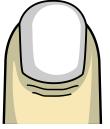
As a classical guitarist, you need to grow nails on the thumb, index, middle, and ring fingers (p, i, m, a) of your right hand. The nails should be long enough to easily pluck the guitar strings.
Standard Guitar Nail Length:
For a standard nail length, grow the index, middle and ring fingernails until they extend slightly past the fingertips--just 2 - 3 millimeters. Depending on how fast your nails grow, this will take anywhere from 1 - 2 weeks.
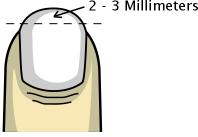
Meanwhile, grow the thumb nail until it extends well past the fingertip - about half a centimeter. This will usually take somewhere between 4 - 8 weeks.
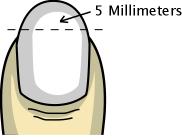
Experiment with Long vs. Short Nails:
As you get more advanced, you should experiment with different nail lengths to find one that you like the best.

In general, long fingernails are good for:
- Playing free stroke
- Playing accurately
- Playing loudly
- Making a bright, clear tone
Whereas short fingernails are good for:
- Playing rest stroke
- Playing at faster speeds
- Making a warm, mellow tone
Step 2: Shape Fingernails
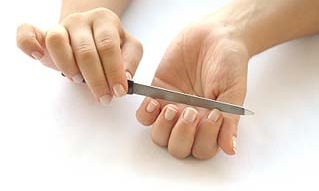
Once your nails grow to the right length, you can then shape them with a nail file. There are many different ways you can shape classical guitar nails, each with it's advantages and disadvantages.
Rounded Fingernails:
Rounded fingernails are the most common guitar nail shape. They are versatile, easy-to-use, and produce a good, balanced tone - not to bright or too dark. If you are unsure what shape to use for you for your nails, I recommend you start with rounded first.

To make a rounded fingernail, file the tip of the nail so that it looks like a half-circle. There should be no edges or points, if you divide the nail in half, it should look symmetrical.
Sloped Fingernails
Sloped fingernails are the next most common nail shape. They minimize resistance when going through the string, and produce a warm, mellow tone.
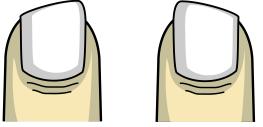
To make a sloped fingernail, file the tip of the nail so that it slopes left or right. The slope should look like a straight line. When you play, the string should start at the lower part of the slope, and end at the higher part.
Flat Fingernails
With flat fingernails, it's easier push your finger through the string and to produce a very warm, mellow tone. Flat nails are especially good for techniques like rest stroke, and fast scales.

To make a flat nail, file the nail very short, and relatively flat across the top, so that it almost looks like a straight line.
Pointed Fingernails
Pointed fingernails are the least common of all the nail shapes, but some people like them for their consistent, bright sound.
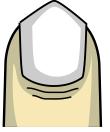
To make a pointed nail, file each side of the nail so that it comes to a point in the middle. The nail should be symmetrical on both sides.
Step 3: Polish Fingernails
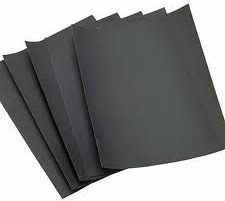
After you've shaped your nails, polish the tip of each nail with extra fine sand paper until it is nice and smooth. This will eliminate the "scratchiness" of your nails to give a you clean, smooth tone.
I recommend using 500 grit "open-coat" sand paper. You can buy it from most hardware stores. It will do wonders for your sound!
Copyright 2014 © ClassicalGuitar101.org | All Rights Reserved
Popular Articles:
Making a Living as a classical guitarist
List of Classical Guitar Competitions
About Me
My name is Daniel Nelson, and I am a classical guitar teacher and performer from Los Angeles, California. Click here to learn more.
Leave a Comment!